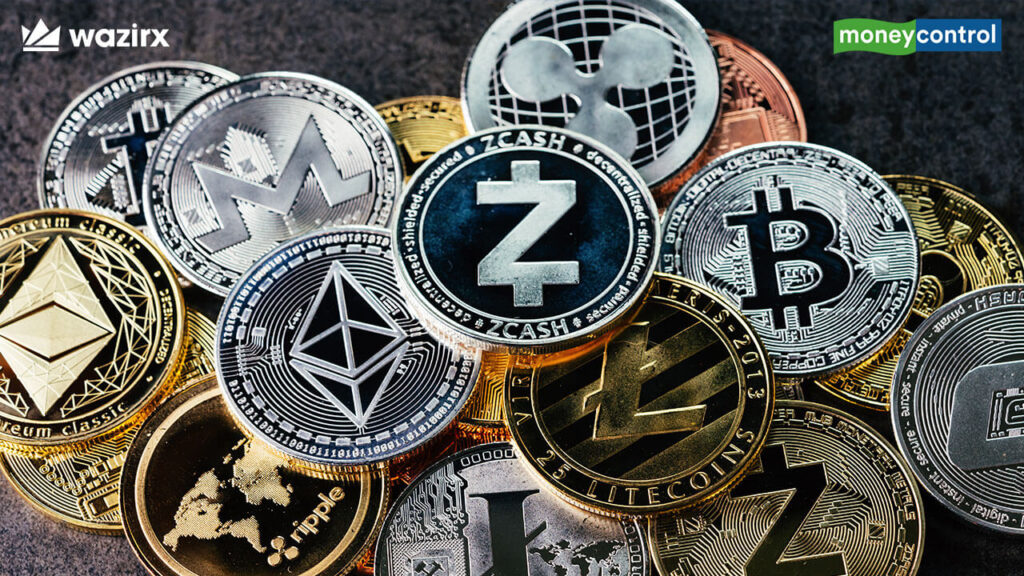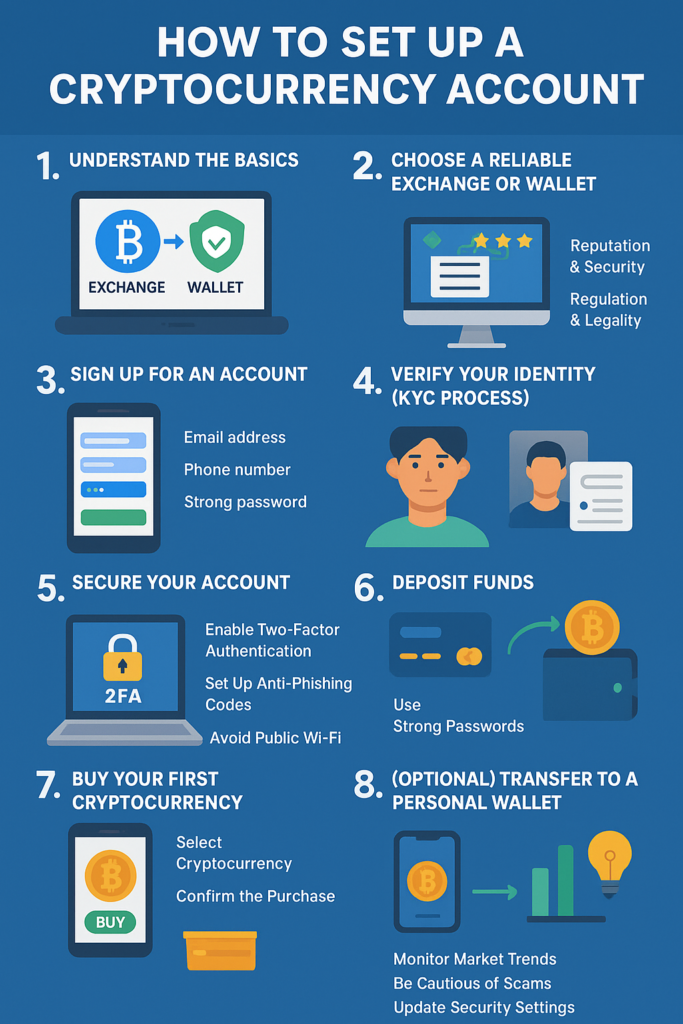Cryptocurrencies like Bitcoin, Ethereum, and others have become increasingly popular as digital assets for trading, investing, and even everyday transactions. To access them, you need a cryptocurrency account, typically offered by exchanges or wallet providers. Setting one up may seem daunting at first, but the process is straightforward once broken down into clear steps.
1. Understand the Basics

Before creating a cryptocurrency account, it’s important to know the two main types of accounts:
- Exchange Account: Provided by cryptocurrency exchanges (e.g., Binance, Coinbase, Kraken), where you can buy, sell, and trade digital assets.
- Wallet Account: A digital wallet (software or hardware) that stores your private keys, giving you direct control over your funds.
For beginners, most start with an exchange account since it’s easier to set up and integrates both buying and storage features.
2. Choose a Reliable Exchange or Wallet
Not all platforms are created equal, so consider the following before selecting one:
- Reputation & Security: Look for platforms with strong security features like two-factor authentication (2FA), insurance policies, and a proven track record.
- Regulation & Legality: Ensure the platform is legal in your country. Some exchanges are restricted in certain regions.
- Supported Currencies: Check if it supports the cryptocurrency you want to buy.
- Fees: Transaction, withdrawal, and trading fees vary by platform.
Popular beginner-friendly exchanges include Coinbase, Binance, and Kraken, while wallets like Trust Wallet and MetaMask give you more control over your private keys.
3. Sign Up for an Account
Once you’ve chosen a platform:
- Visit the official website or download the app.
- Click Sign Up or Create Account.
- Provide your email address, phone number, and create a strong password.
- Confirm your email/phone with the verification code sent.
4. Verify Your Identity (KYC Process)
Most reputable exchanges require Know Your Customer (KYC) verification to comply with regulations. You will need to:
- Upload a government-issued ID (passport, driver’s license, or national ID card).
- Provide a selfie or live photo for face verification.
- Submit proof of address (utility bill, bank statement, or rental agreement).
Verification may take a few minutes to several days depending on the platform.
5. Secure Your Account
Security is critical in the crypto world. After registration and verification:
- Enable Two-Factor Authentication (2FA): Usually via Google Authenticator or SMS.
- Set Up Anti-Phishing Codes: To avoid fake emails from scammers.
- Use Strong Passwords: Combine letters, numbers, and special characters.
- Avoid Public Wi-Fi: Especially when accessing your account.
6. Deposit Funds
Once verified, you can fund your account to start buying crypto. There are two common ways:
- Fiat Deposit (USD, EUR, GHS, etc.):
- Link your bank account, debit/credit card, or mobile money (where supported).
- Deposit the amount you want to invest.
- Crypto Deposit:
- If you already own cryptocurrency, transfer it from another wallet by copying your exchange wallet address.
7. Buy Your First Cryptocurrency
With funds in your account:
- Go to the Buy/Sell or Trade section.
- Select the cryptocurrency you want (e.g., Bitcoin, Ethereum).
- Enter the amount in fiat or crypto terms.
- Confirm the purchase.
Your purchased cryptocurrency will now appear in your account balance.
8. (Optional) Transfer to a Personal Wallet
Although exchanges keep your crypto accessible, many users prefer moving their funds to a personal wallet for greater security. Options include:
- Software Wallets: Mobile or desktop apps like Trust Wallet, MetaMask, or Exodus.
- Hardware Wallets: Physical devices like Ledger or Trezor for maximum security.
To transfer:
- Copy your wallet address.
- Paste it into the exchange withdrawal field.
- Confirm the transaction.
9. Stay Informed and Manage Your Investments
Owning cryptocurrency is just the start. Best practices include:
- Monitoring market trends and price movements.
- Being cautious of scams and fake investment schemes.
- Regularly updating passwords and security settings.
- Considering long-term storage if you’re not actively trading.
Final Thoughts

Setting up a cryptocurrency account is a step-by-step process that requires careful attention to security and verification. Start with a reputable exchange, secure your account, and consider transferring funds to a personal wallet for long-term holding. By following these steps, you can safely enter the world of digital assets and begin your crypto journey.
Below is a summary of the whole process.



